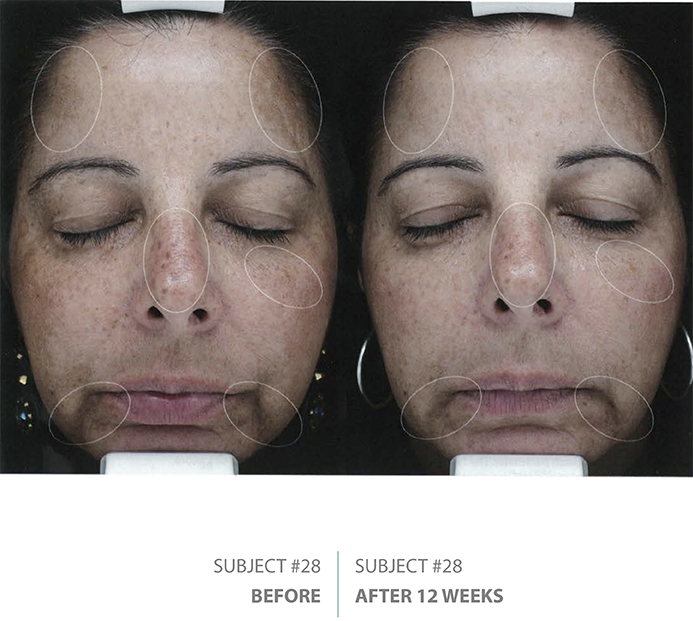Clinical Studies
Clinical Studies
Peer-reviewed and published study showed that applying the PRO Rebalancing Lotion directly on post-procedure skin reduces redness after 8 and 24 hours significantly better compared to no treatment.
October 2016 Journal of Clinical and Aesthetic Dermatology
November 2015 Journal of Drugs in Dermatology
Journal of Clinical and Aesthetic Dermatology

Objective
Evaluation of the PRO Rebalancing Lotion in the reduction of facial erythema following a chemical peel treatment. Edema was also assessed.
Source: Journal of Clinical and Aesthetic Dermatology October 2016 JClin Aesthet Dermatol. 2016; 9(10):55-62
Title: A Split-Face Evaluation to Assess the Efficacy of a Hydrolyzed Roe Cream in Reduction of Erythema Following Chemical Peel
Design
The PRO Rebalancing Lotion was applied to one side of the face of 30 healthy female subjects (average age=54.9 years, range 33-65 years) immediately following 4 to 15 minutes peel treatment. The opposite side remained untreated. Visia-CR digital photographs were taken at baseline and 8 and 24 hours post-facial peel. Objective dermal irritation assessments were done by a blinded investigator, graded on severity of facial erythema and edema on a 5-point scale; 0=none, 1=slight, 2=mild, 3=moderate, 4=severe. Subjects completed a perception questionnaire.
Results
Reduction in erythema was greater (P less than or equal to: 0.05) for the treated side of the face compared to the untreated side at both 8 and 24 hours post-peel. Both sides showed reduction in erythema compared to immediate post-peel. No edema was observed. At eight hours, more than 50% of subjects agreed on the five attributes, and at 24 hours, 57% (17/30) of subjects agreed. At eight hours, greater than or equal to 80 percent of subjects strongly agreed or agreed that the treated skin feels hydrated and moisturized immediately after application. At 24 hours, more than 90 percent of subjects strongly agreed or agreed that treated skin feels perfectly hydrated and moisturized. When asked about their overall impression of the product, 60 percent (18 subjects) of subjects responded said, “I love it.” All subjects completed the study. No adverse events were reported.

Journal of Drugs in Dermatology
Objective
An Evaluation of Efficacy and Tolerability of Novel Enzyme Exfoliation Versus Glycolic Acid in Photodamage Treatment
Design
Glycolic acid acts by chemical destruction of adhesions between skin cell to exfoliate superficial skin layers and excess pigmentation. It is well known to improve the appearance of photoaged skin, but is associated with varying degree of skin irritation. Hydrolyzed salmon roe proteins destroy cell adhesions enzymatically with potentially less irritation than acid treatments. This double-blind prospective study the efficacy and tolerability of hydrolyzed roe verus glycolic acid, and with crtric acid.
75 female subjects with mild to moderate photodamage, all skin types, and ages 31-70 years, were enrolled. In this 12 week study of twice daily self-treatments, patients were assigned to one of 3 groups;; Group 1 was assigned hydrolyzed roe cream, group 2, 4% glycolic acid, or group 3, 8% glycolic acid plus 2% citric acid. All patients used the same mild face wash and SPF 30 sunscreen throughout the study. Patients were evaluated at weed 0, 8, and 12 for objective and subjective tolerability, improvement in photodamage by VISIA Complexion Analysis, modified Packman and Gans method, Visual Analog Scale (VAS), and answered and opinion questionnaire.
Results
Topical hydrolyzed roe protean used twice daily improves skin clarity. It has good tolerability with fewer instances of stinging and burning than other glycolic acid containing cream. Patient's opinions of the 3 products were similar.

